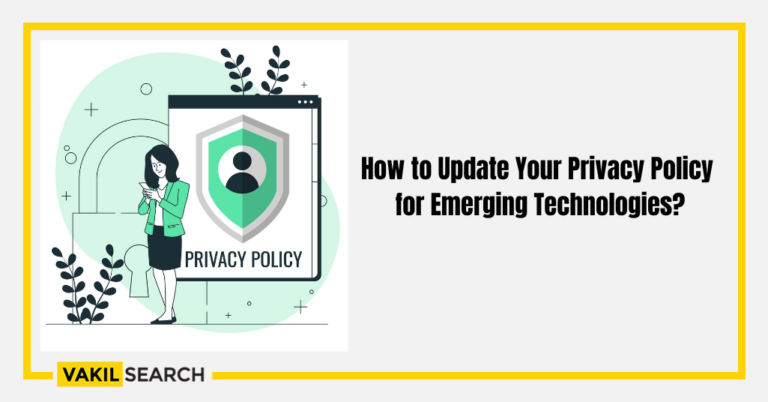Issue of increasing scale of data in data privacy and its importance. Know how to collect data for it and what is the best way to present that data along with a suitable privacy policy.
Introduction
Data privacy, also known as information privacy, is a subset of data protection that deals with properly handling data with a focus on compliance with data protection regulations. Know about Privacy Policy Laws in India! Data privacy is concerned with how data should be collected, stored, managed, and shared with third parties and in compliance with privacy policy laws. Although the terms data protection and data privacy are frequently used synonymously, there is a significant difference between the two.
Data privacy specifies who obtains access to information, whereas data protection implements technologies and regulations to prevent access to the data. Organizations are responsible for adopting precautions and complying with the privacy policy to secure private user data, and compliance requirements ensure that entities comply with customer privacy requests.
With the increased use of personal data, data privacy should be at the top of your company’s risk management plan. It is an unavoidable challenge that must not be ignored. Then what are the main problematic data privacy issues? The issues are mentioned below:
Data Privacy Policy Challenges
Following are some of the most prominent hurdles in ensuring foolproof data privacy
-
Incorporating Data Privacy Policy
Sadly, many businesses treat data privacy as an afterthought to their IT security or disaster recovery plans. However, this is insufficient because data privacy affects many aspects of your business. Users can’t afford to put privacy on the back burner. It might not be straightforward, so make sure you collaborate with and gain approval from all departments. Choose tools that support your current Terms and policies, such as making data anonymization easier.
-
Devices Are Proliferating
Data privacy is becoming increasingly challenging to manage in case you contemplate the Internet of Things (IoT), carry your information technology regulations, and the growth of internet-connected smartphones, laptops, and watches. There is much more info to monitor when more gadgets are incorporated into the workplace. Compliance and data privacy must be managed by your firm from any source across numerous operating systems and apps. Ensure you have proper data governance procedures in place to address this issue.
-
High Maintenance Costs
Managing system security and preventing data privacy issues at the corporate level can be difficult and expensive. However, the costs of a data breach are so high that you must bite the bullet and invest properly. That is why process automation is critical. However, this can be helpful in several ways:
-
- Data silos should be reduced
- Manual processing and removing points of friction
- Minimising the chance of human error
- More possibilities for de-duplication
- Better governance and control
- Cost savings
-
Many Industries Struggle With Access Control.
Data privacy leaks are usually caused by poorly controlled access within a company. Humans and procedures are equally vital as technology. We are the most vulnerable component of the chain of privacy and security.Even so, as distributed working becomes more common, managing user access and securing sensitive data becomes more difficult. To address this, you will require an effective data architecture as well as strong data governance processes.
-
Data on an Ever-increasing scale
As cloud storage and computation prices drop, organizations are floating in data nowadays. However, as the volume of global data expands (to tens of zettabytes), the problem of handling these oceans of information grows huge. You require a solution capable of managing dozens of devices and billions of collected data.
Importance Of Privacy Policy
Data privacy scenarios include personal health information (PHI) and personally identifiable information (PII). Financial data, patient history, social security or identification numbers, names, dates of birth, and contact info are all included.
- Concerns about data privacy apply to all sensitive information handled by organizations, such as that of customers, shareholders, and employees. This data is commonly used in corporate operations, development, and financing.
- Data privacy ensures that sensitive information is only accessible to authorized parties. It keeps criminals from using data maliciously and assists organizations in meeting regulatory requirements.
- Data protection laws govern how certain types of data are obtained, transmitted, and used. Names, photos, email addresses, bank account details, IP addresses of personal computers, and biometric data are all examples of personal data.
Collecting Data For Data Privacy Policy
The approaches adopted to gather information differ depending on the application. Some entail the use of technology, whereas others are done by hand.
Some frequent data collection methods are as follows:
- Data collecting functions that are implemented into commercial programs, internet, and mobile apps;
- sensors that capture operational information from mechanical devices, cars, and other machinery
- data gathering from information service providers and other outer information sources
- monitoring social media, message boards, review sites, blogs, and other online outlets
- Online, in-person, or by phone, email, or normal mail surveys, questionnaires, and forms;
- focus groups and individual interviews
- Volunteers in a research project are observed directly.
What An Entity’s Privacy Policy Entails?
A privacy policy is a form of a legal statement that appears on your website and informs users about how and why you collect their information. It specifies how you use the information, why you are using it, and whether or not it is shared with others.
Privacy is an individual’s area, yet neither governments nor corporations can interfere without consent. But we constantly disclose private information: our addresses, credit card numbers, and birthdays. Privacy policies enter the picture at this point. Nearly all the establishments on the internet now require a privacy statement. Certainly, if you maintain no data and sell nothing, you can avoid it, but even private bloggers must examine whether a privacy policy is necessary for them.
The number and strength of consumer privacy regulations are rapidly increasing. Both customers and business associates increasingly expect you to explain how you use and protect their personal information.People are becoming more aware of the objective of a privacy policy, what to look for in a good one, and which ones provide little protection. Displaying your robust data security demonstrates your concern for and safeguarding your consumers. Get the Master Service Agreement Online Services from Experts.
These are what the New York Times’ privacy policy includes:
- What personal information do we collect about you, and what are we doing with that data?
- Who else releases the data we collect?
- What are your legal rights?
- How long will you keep the data?
- How do you safeguard my data?
- Are there any rules for children?
- How does information travel around the world?
- What is our legal foundation?
- What about third-party service links?
- How will updates to this privacy statement be communicated?
- How can you get in touch with us?
- Who is the person in charge of your private details?
FAQs
What must be included in the privacy policy?
A privacy policy must include information about the types of personal data collected, how it is used, who it is shared with, and how users can exercise their rights.
Do users need to accept the privacy policy?
Yes, users typically need to accept the privacy policy before using a website or app. This is usually done through a checkbox or button.
How can we improve our privacy policy?
To improve a privacy policy, businesses can make it more user-friendly, transparent, and concise. They can also provide clear explanations of data collection and use practices.
Which is the most important component of privacy policy?
The most important component of a privacy policy is the information about data collection and use practices. This includes what data is collected, how it is used, and who it is shared with.
Should all websites have a privacy policy?
Yes, all websites that collect personal data should have a privacy policy. This is required by law in many countries, including the US and EU.
Can you write your own privacy policy?
Yes, businesses can write their own privacy policy. However, it is recommended to consult with a legal professional from Vakilsearch to ensure compliance with applicable laws and regulations.
Where data privacy is not applicable?
Data privacy may not be applicable in certain situations, such as when data is collected anonymously, or when it is collected for national security or law enforcement purposes.
Is privacy policy URL mandatory?
Businesses should provide a privacy policy URL on their website or app. This makes it easily accessible to users.
What is the difference between a privacy policy and terms and conditions?
A privacy policy outlines how personal data is collected and used, while terms and conditions govern the use of a website or app. Both are important legal documents that businesses should put out on their website.
Conclusion
Your modern business must address various data privacy challenges, ranging from a rapidly evolving technological landscape to gaining visibility into all of your data infrastructures due to their importance. Visit the official website of Vakilsearch for legal consultation and services so you’ll be well-positioned to deal with your data privacy policy concerns.










